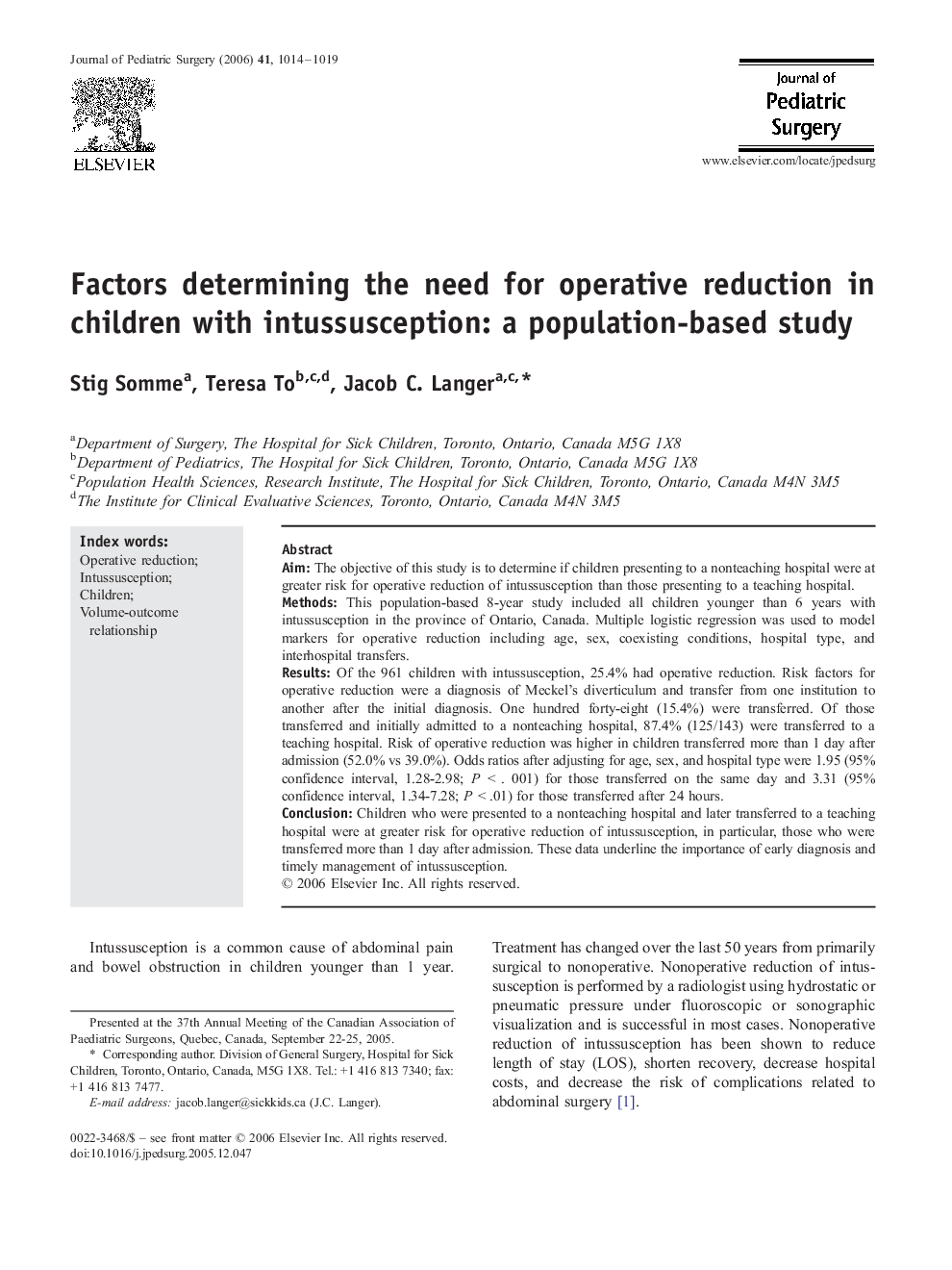| Article ID | Journal | Published Year | Pages | File Type |
|---|---|---|---|---|
| 4160428 | Journal of Pediatric Surgery | 2006 | 6 Pages |
AimThe objective of this study is to determine if children presenting to a nonteaching hospital were at greater risk for operative reduction of intussusception than those presenting to a teaching hospital.MethodsThis population-based 8-year study included all children younger than 6 years with intussusception in the province of Ontario, Canada. Multiple logistic regression was used to model markers for operative reduction including age, sex, coexisting conditions, hospital type, and interhospital transfers.ResultsOf the 961 children with intussusception, 25.4% had operative reduction. Risk factors for operative reduction were a diagnosis of Meckel's diverticulum and transfer from one institution to another after the initial diagnosis. One hundred forty-eight (15.4%) were transferred. Of those transferred and initially admitted to a nonteaching hospital, 87.4% (125/143) were transferred to a teaching hospital. Risk of operative reduction was higher in children transferred more than 1 day after admission (52.0% vs 39.0%). Odds ratios after adjusting for age, sex, and hospital type were 1.95 (95% confidence interval, 1.28-2.98; P < . 001) for those transferred on the same day and 3.31 (95% confidence interval, 1.34-7.28; P < .01) for those transferred after 24 hours.ConclusionChildren who were presented to a nonteaching hospital and later transferred to a teaching hospital were at greater risk for operative reduction of intussusception, in particular, those who were transferred more than 1 day after admission. These data underline the importance of early diagnosis and timely management of intussusception.
